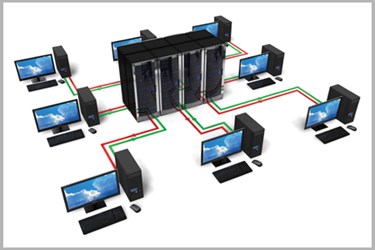Why You Can't Afford To Skimp On Network Monitoring Software
By Rick Delgado, contributing writer

It’s hard to imagine a time when computer networks were small and few. Telephone lines and telegraphs paved the way for network development as they connected people around the nation with Morse codes and messages.
In the last century, it’s turned from a two dimensional idea and practice to a worldwide phenomenon, transferring pretty much anything from anywhere, with new networks daily. Because of this development, we now live in an age where network monitoring has become a necessity to keep our systems functioning properly. Monitoring a network isn’t just about user experience anymore; it’s tied to the bottom-line. According to Ponemon, a downed network can cost a business up to $5,000 a minute or more.
A closer look into network monitoring software (NMS) will show why businesses should start treating their software as a commodity, similar to the computer networks they work and live in. Network performance monitoring software is composed of many aspects that keep business systems streamlined. General basics of monitoring include performance status of elements in networks; transferring information gathered from the element to the NMS; and overall presentation the information is in. With this, comes better management of networks.
Furthermore, from simply pinging to Syslog and leveraging the power of scripts, it can determine where problems occur, what a normal functioning network should look like and provide backup for your client’s data — all of which are vital to a business. Consider how much money and time could be lost if a network is down for an hour or half of the work day? Network World cites Gartner, “the hourly cost of downtime for computer networks is $42,000.” This downtime can be critical to any organization, which makes ROI high with NMS.
Below are some functions of network monitoring, and why it’s necessary for small and large businesses alike.
- Data Security. First of all, network monitoring provides data security to your organization. Network monitoring can detect incoming and outgoing threats that can compromise your work as well as manage your data storage. Through outlets, including disk monitoring, look for issues like storage, performance and help IT workers know when more storage or upgrades are necessary.
For example, in the biotech industry the data collected and stored on their networks is vital to their industry and can’t afford a security breach. Furthermore, data security should be a team effort between employees and IT department — contacting the department when suspicious activity shows up on email or other programming and IT confirming it through their network monitoring. The proactive system allows for threats to be highlighted before possible future damage to an organization’s information.
- Performance Measures. Generally speaking, network monitoring’s most important function is keeping a system healthy and efficient. Daily monitoring can track how networks should act and create reference for when network issues do arise. Some best practices to insure proper network behavior include: baselining, reporting at every level of the network, setting up an escalation matrix, backup monitoring — such as high availability (HA) and configuration management. These techniques help not only to stay one step ahead in managing networks, but help them perform better. For example, HA is very important for times when your system crashes. It allows access to the monitoring system to pinpoint where the issue occurred. Monitor software also allows for saved data to be copied and placed in a remote site. When your networks perform better through detection and prevention, so does your organization.
- Workflow. NMS also allows for more streamlined business operations. Slower networks due to little or no monitoring lead to “downtime,” which can be very costly to an organization. As mentioned before, NMS doesn’t just react by alerting errors, but is proactive in managing storage and avoiding bottlenecking information. Just imagine the time it would take to locate the error and resolve network issues without any monitor software. For example, if a hardware device were to crash during the workday, NMS would examine the “health” of the hardware through important measurements. These include: CPU usage, fan speed, and temperature of the hardware and power supply. NMS gives you the health status of these metrics with an “Up,” “Warning,” “Critical” and “Undefined” status. With this software, all of these elements would be monitored to ensure a properly functioning hardware and have IT foresee any future issues.
Lastly, most important to a variety of organizations is customer service. Monitoring networks can improve customer satisfaction with more reliable systems. It also creates happier employees knowing their work and data is secure.
So, why incorporate network monitoring? The bottom line is better work efficiency that will be cost effective in the long run. NMS eliminates downtime, which can cost companies sufficiently money in lost productivity. In addition, NMS helps you stay one step ahead of every day network and data threats, which is the best ROI any software can provide.
